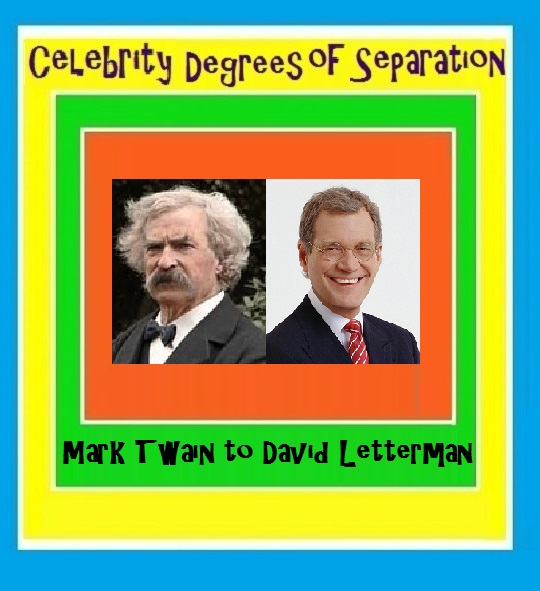
Mark Twain to David Letterman, 4 Degrees of Celebrity Separation.
Earlier this week, on May 20, David Letterman, television host, comedian, writer and producer, bid farewell to his thirty-three years of fans and hosted his very last program, The Late Show With David Letterman.

The logo and the host.
The show ran on CBS since August 30, 1993, but before it Dave was on NBC, hosting The David Letterman Show, the first episode of which aired on February 1, 1982.
With deft brilliance, Letterman managed a subtle art all these years, balancing snarky sarcasm, and dry wit with a genuine warmth and earnest respect for all his many thousands of guests.
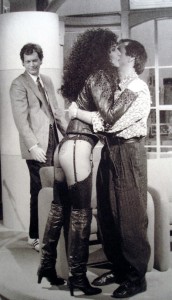
Letterman simply gave a comical deadpan stare when guest Cher stood up to welcome her former husband Sonny Bono, 1987.
His sharp mind moved quickly, always able to toss off an appropriate and spontaneous quip with understatement without talking down to his audience or insulting his guests. He teased gently. Some attribute his delivery and tone to his Midwestern background, as he hails from the Hooiser State.
Of course not far from Indiana is Missouri, the birthplace of perhaps the nation’s most legendary humorist Mark Twain, best remembered as an author.
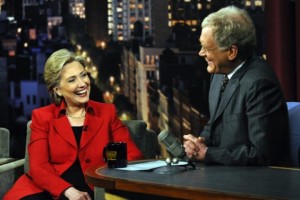
Hillary Clinton gags it up with Letterman.
Mark Twain may have died in 1910, some seventy years before television first delivered David Letterman to America, but Twain was the original stand-up late-night comedic monologist, touring the country in evening performances and offering a barbed but never mean commentary on the American scene, keeping his material fresh with topical subjects from politics to pop culture.
And while he never hosted a television show, he seemed to have met and known a large number of the most famous people of the late nineteenth and early twentieth centuries.
Astoundingly, there is only four degrees of celebrity separation between Mark Twain and David Letterman.
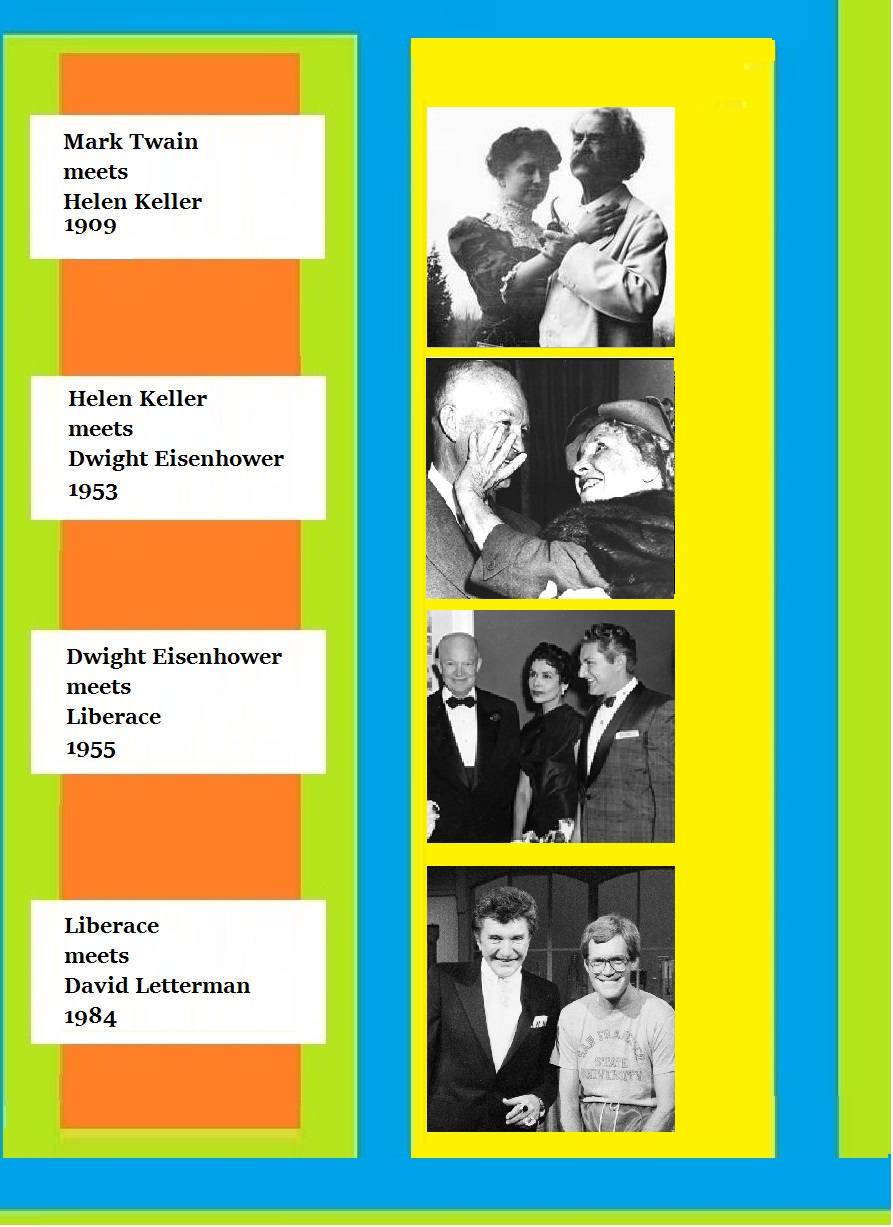
In March of 1895, Mark Twain (November 30, 1835 – April 21, 1910) first met Helen Keller, a young woman who, despite being unable to speak or hear, was already considered remarkable for her determination to integrate fully into society despite her two sensory limitations.
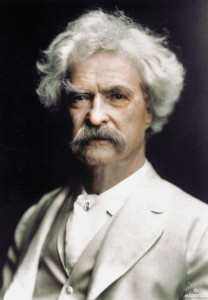
Mark Twain. (i.imgur.com)
Their initial contact was at a luncheon in New York, where Keller had come to begin studies at the School for the Deaf; it was hosted by one of her early benefactors, the editor Laurence Hutton, a colleague of Twain’s.
Both were immediately impressed with one another, she being familiar with his writing and he being stunned by how she used touch and scent to learn. “Mark Twain has his own way of thinking, saying and doing everything,” she said of him. Learning that she passed the admissions test for Radcliffe College, Twain passionately lobbied his wealthy friend Henry H. Rogers to ensure that Helen Keller’s brilliance would be permitted to thrive with financial support, and further encouraged him to seek funding from John D. Rockefeller.
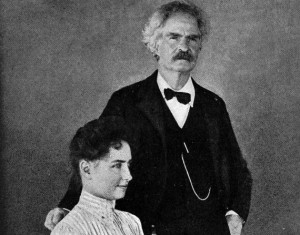
Twain and Heller.
As Twain wrote of Keller, “It won’t do for America to allow this marvelous child to retire from her studies because of poverty. If she can go on with them she will make a fame that will endure in history for centuries. Along her special lines she is the most extraordinary product of all the ages.”
The two remained friends for the rest of Twain’s life, and she came to visit him at his home on several occasions, the last being in 1909, a year before his death.
Although she was never able to see or hear, Helen Keller (June 27, 1880 – June 1, 1968) became a world figure, writing books and articles and making appearances in her mission to help all people who struggled with physical disabilities to also live to their fullest potential.
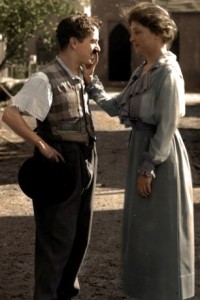
Helen Keller with Charlie Chaplin.
Earlier in her career, she was also an avowed socialist, concerned about protecting the rights of the vulnerable working-class. She met everyone from Charlie Chaplin to Martha Graham, and every President of the United States from Grover Cleveland to Lyndon B. Johnson.
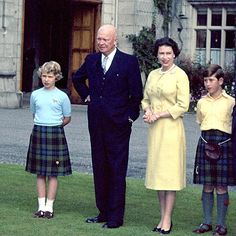
Among the many world leaders Eisenhower knew well from his years as a U.S. General and through his presidency was Queen Elizabeth, seen here with him and her children Anne and Charles.
During and after World War II, Helen Keller gave especial focus to aiding those servicemen who had lost their sight while fighting for the U.S. The five-star general and commander of the Allied Forces Dwight D. Eisenhower (October 14, 1890 – March 28, 1969) was especially moved by her effort.
When he became President of the United States, Eisenhower wanted to pay special tribute to Keller, inviting her to the White House for their first meeting, on November 3, 1953.
As both general and president, Eisenhower had a life full of crossing paths with the famous. Sixteen months after meeting Keller, on March 19, 1955, the President attended the annual White House Press Photographers Dinner, held in Washington D.C.’s Statler Hilton.
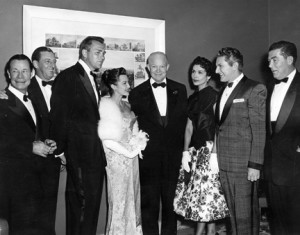
Eisenhower with (left to right) Brown, Bolger, Keel, Russell, Horne, Liberace, and Richardson.
Among the performers that night was the show-stopping pianist [Władziu Valentino] Liberace (May 16, 1919 – February 4, 1987), one of the first famous performers to go simply by a single name. Among the other performers that night were Joe E. Brown, Ray Bolger, Howard Keel, Connie Russell, Lena Horne, and Sid Richardson. After the show, the President came backstage to speak with each of them individually, and they posed together as a group.
Thirty years after meeting the President, Liberace was still going strong, building an incredibly successful career not only by his tinkling of the ivories, but also his world tours of lavish stage performances and television appearances, including Saturday Night Live, The Muppets, and a stint as a crook “Chandell” on the popular 1960s Batman series.
He also enjoyed a stint hosting his own television show. At one time the Emmy-winner was the highest-paid entertainer in the world.

Liberace and Letterman cook eggs.

Liberace and Dave, along with a bewildered Dylan.
With a flamboyance that matched his home base of Las Vegas, Liberace became known by his furs and glittering costumes, even once being lowered on stage from wire above, as if descending from the heavens.
He was also entrepreneurial, turning his talent for cooking into a restaurant and writing a cookbook. Liberace first appeared on television with made his first appearance with David Letterman (born April 12, 1947) on the NBC show, during the 1983 Christmas season and was a smash success.
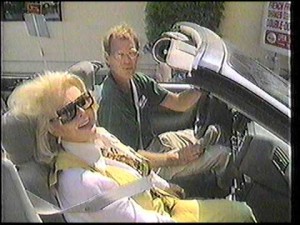
Zsa Zsa Gabor and David Letterman in a still from their famous drive through Los Angeles fast food drive-in restaurants.
Several months later he returned to do a cooking segment with Dave, on March 2, 1984. That night’s other great star was music legend Bob Dylan, who was seemingly bewildered by Liberace.
As he did in reaction to so many of his novelty guests, from Pee Wee Herman to the Del Rubio Triplets to Zsa Zsa Gabor to Richard Simmons, Dave Letterman’s deadpan expressions and asides only fueled audience laughter, but never at the expense of the star.

Sidekick Calvert DeForest appeared on Letterman’s very first show. The elderly former file clerk called it, “the greatest thing that had happened in my life.”
And just like Twain, Keller, Eisenhower and Liberace, he seemingly encountered every important person, or certainly those in the news for a time, from the worlds of entertainment, sports, politics, music, and art.
From his “Stupid Pet Tricks” to “Top Ten” lists, the Letterman sensibility seemed to capture a quintessentially American humor and has become a part of national culture.
Certainly, the hidden hand in his comedy and commentary are qualities Mark Twain would have appreciated.

Mark Twain to Helen Keller to Dwight Eisenhower to Liberace to David Letterman.
Categories: Celebrity Degrees of Separation
Tags: David Letterman, Dwight D. Eisenhower, Helen Keller, Liberace, Mark Twain
 Pancho Villa to Donald Trump: Five Degrees of Celebrity Separation
Pancho Villa to Donald Trump: Five Degrees of Celebrity Separation  Joan Rivers to Etiquette’s Amy Vanderbilt: Celebrity Degrees of Separation
Joan Rivers to Etiquette’s Amy Vanderbilt: Celebrity Degrees of Separation  Justin Bieber to Thomas Edison: Eight Celebrity Degrees of Separation
Justin Bieber to Thomas Edison: Eight Celebrity Degrees of Separation 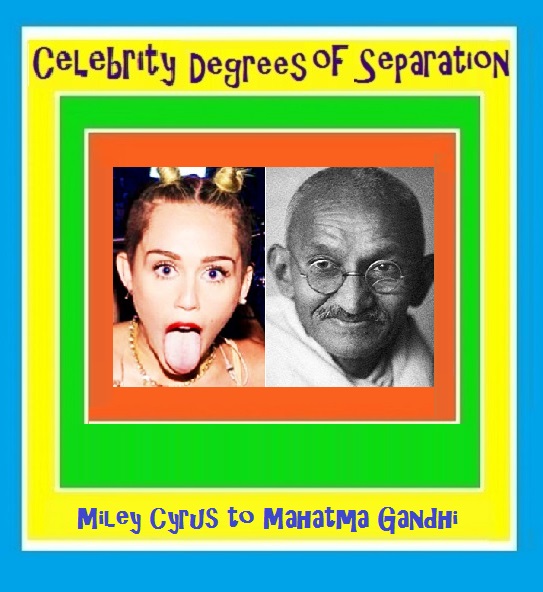 Miley Cyrus to Mahatma Gandhi: Eight Celebrity Degrees of Separation
Miley Cyrus to Mahatma Gandhi: Eight Celebrity Degrees of Separation  Lindsay Lohan to Madame Curie: Celebrity Degrees of Separation
Lindsay Lohan to Madame Curie: Celebrity Degrees of Separation 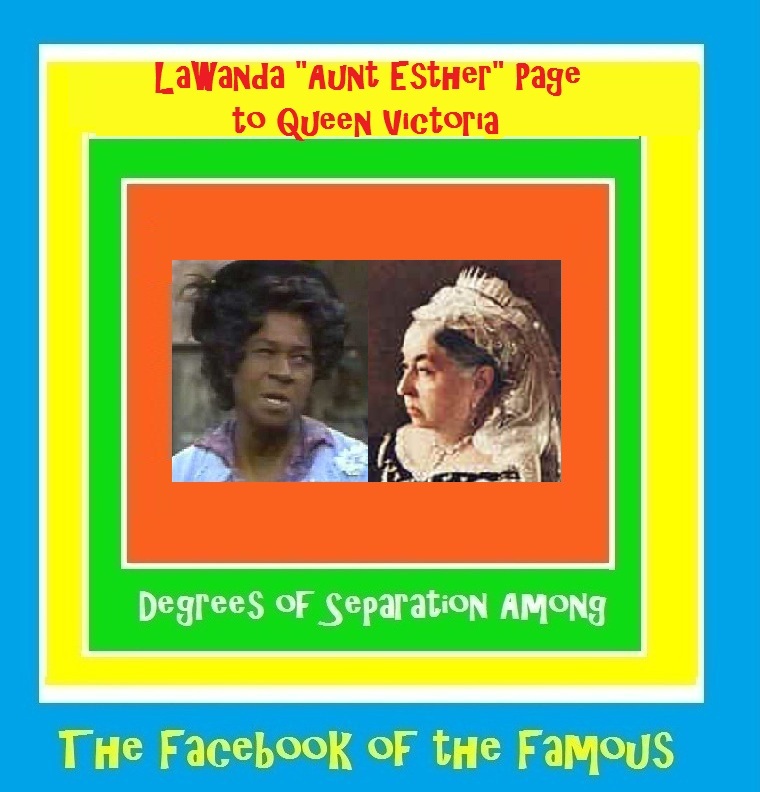 “Aunt Esther” to Queen Victoria: Three Degrees of Celebrity Separation!
“Aunt Esther” to Queen Victoria: Three Degrees of Celebrity Separation!
Leave a Reply